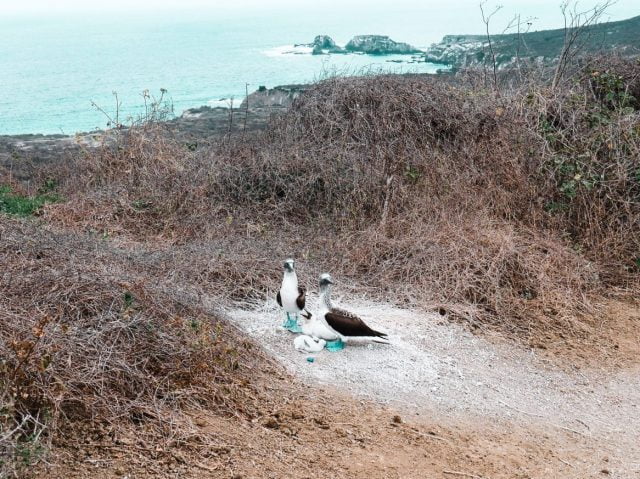Update as of Oct 2024: After the landslide that damaged much of Kuelap in 2022, the grounds have reopened with a limited capacity in the fortress of just over 400 visitors per day. Restoration efforts are still taking place and some areas of the ruins are still closed off.
We arrived in Chachapoyas around 6:30 in the morning, feeling groggy from a restless night of sleep on the bus. We set out on foot to find our hostel, ready for the day ahead. Before arriving in the city, we hadn’t had a plan for the day, but we met several fellow travelers and all decided to venture out to the ancient ruins of Kuelap.
After putting our bags at the hostel, we headed out to find a tour and grab some breakfast. Many of the tour agencies sit around the Plaza de Armas in the center of the city. We found the Santa Maria Travel & Tours agency and booked a last-minute tour with them for 75 soles each. The tour included transport, lunch, a guided tour of the ruins, and tickets for both the gondola and entrance into the ruins. As of 2024, it appears many Kuelap tours cost closer to 90 soles for a similar itinerary.

Getting to Kuelap
At 8:30 a.m., our group departed for Kuelap in a van. We stopped in Nuevo Tingo to place orders for lunch after the tour and had a quick look around the small town. The van took us 10 more minutes up the street to the gondola station.
The Kuelap cable cars opened in early 2017, eliminating the long approach hike and bringing more tourism to the area. It is also the first cable car system to be built in Peru. If you visit on your own, you’ll pay the 26 soles for the cable car ticket at the little station and 30 soles to enter the fortress. They only accept cash. See updated hours and more info on the gondola here.

The gondola glided high over the valley and up the hill below the ruins. A short, ascending hike led our group to the towering walls that surround the fortress. Our tour was entirely in Spanish despite our guide telling the group there would be an English-speaking guide at the ruins. Luckily, Matt and I could understand a fair amount of Spanish.
Touring Kuelap
The Kuelap visitor’s center, some trails, temporary exhibition center and grounds around the fortress are open Tuesday through Sunday from 9a.m. until 5p.m. The fortress can be accessed with a separate ticket from Tuesday through Sunday from 9a.m. until 2:50p.m. If visiting on your own, buy tickets online and choose a time slot in advance. If going with a guide, double check to see that they organize the tickets for you.
After the gondola ride, we hiked up to the ruins and wound our way outside the walls. Our group entered the fortress on the backside through a small opening in the stone.
Kuelap was built around 500 AD before Incan times by the Chachapoya and served as a small city and a fortress to protect its inhabitants against intruders. The Incans invaded and destroyed many of the structures, but the foundations of the homes and ceremonial buildings still can be seen. The downfall of Kuelap came with colonialism, and it became a lost city. Due to its remote location, it wasn’t discovered again until the mid-1800s.

The views around the fortress were stunning. Green mountains that were partially covered in a patchwork of agricultural plots surrounded us. The day was hot, and we found ourselves overheating in pants even though the morning was cool. There were a fair amount of people visiting the ruins, but our guide did a great job of spacing us between the groups of people so that we could enjoy the area and snap some pictures.

At the end of the tour, we hiked in the scorching sun back down to the gondola and the bus. Tired and sweaty, the group was ready for a tasty lunch at the restaurant in Tingo.
Extra Notes on Touring Kuelap
Weather can change quickly up there, so bring light layers/ a rain jacket. Shade is limited in areas, so bring sun protection as well. Also be sure to wear comfortable shoes as some of the paths are uneven and you’ll be doing a fair amount of walking.
Taking a tour of Kuelap is a great chance to learn about the lesser-known cultures of ancient Peru. When on the tour, respect the ruins by staying on the trail. A lot of work has gone into restoring and preserving this piece of history.
While we were there, it was mandatory to have a guide to access the area inside the walls. Now, we have been told you can visit the fortress on your own. However, we enjoyed having a guide because there is so much to learn about the ruins and the people who once lived here, all of which our guide explained very well. There also weren’t many informational signs in the fortress as we explored, so a guide’s explanation was helpful.

Like this Post? Pin it!




